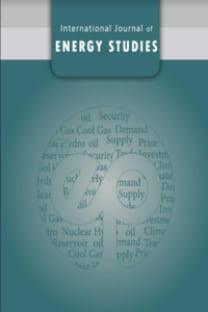Iran In The Energy Game While Passing Through The Energy Door
The Middle East is often referred to as a perennial geopolitical hotspot, the bedrock of shifting power play of partnerships, and constant shift of alliances – all in the midst of emerging and demising local powers. Iran sits at the epicenter of this political, economic and social development in the neighborhood. On one hand, as a prominent OPEC member, Iran quietly aims to exert influence through energy diplomacy in its relentless pursuit to elevate its rank from a regional to global power status. On the other hand, resting on a young, educated population with rich energy reserves and vast terminal capacity on the Gulf, Iran’s engagement in bold expansion policies has an underlying intention to boost its hegemony in the region and to play the role of a great power in world political affairs.Iran is the second largest economy in the Middle East and North Africa (MENA) after Saudi Arabia – its main regional rival, whose economic activity and government revenues still depend largely on oil revenues and therefore remain volatile.[1] While the western sanctions have reduced Iranian oil exports by about two thirds, causing Iranian currency “Rial” constantly to depreciate its value, the World Bank estimates that Iran will grow by 1.9 % in 2015.[2] Iran’s current oil production is just over 3 million b/d[3] and while this is expected to increase after the lifting of all sanctions, in reality, it can add no more than 300,000 – 500,000 b/d barrels to its actual oil production due to fast depleting oil fields and underinvested infrastructure.[4] Before the Islamic Revolution, in 1974, Iran was a regional ally of Israel and had received close support of the U.S. administration to start its controversial nuclear program for peaceful purposes, due to fast maturing oil fields and excessive production under the Shah regime. The situation met with bitter sanctions in the wake of post-revolution Iran-Iraq War, when Iran tried to achieve military self-sufficiency and re-initiated the program, casting serious concerns in the west towards Iran’s hidden agenda.While Iran’s ambitious plans to reach pre-sanctions oil output is welcome by keen observes in western energy circles, the truth is that Iran will need years to repair the damage on its existing infrastructure to reach that capacity amid sharp increase in domestic consumption. With oil production is at its highest levels since 1960s and a world-wide excess output of 2m b/d, the profitability of such an investment on the scale of $200 billion[5] is questionable as oil markets already face a persistent glut that has more than halved prices in the past 16 months.[6] OPEC’s published official statistical data that puts Iran’s proven oil reserves at 157 bb has been falsified by various researches, the average of whose estimates is between 30-35 bb.[7] In fact, perhaps ironically, Iraq, OPEC’s second largest oil producer has almost the double of this amount at 77 bb, proven but undeveloped reserves, with production cost of $1 per barrel in contrast to $3-$4 in Iran.[8] With the nuclear accord signed between P5+1 and Iran in Vienna on 14th of July 2015, Iran is expected to gradually lift trade barriers and receive an influx of western technology to help modernize its aging infrastructure. This will increase capital investment; enable development projects, and increase spending. As oil prices begin to surge towards $60-$70 mark by 2017, Iran will expand trade with its partners, although it is still far over the horizon to see its production capacity to jump to 5.7m b/d level, or even the 4.8m b/d, as targeted by Iran’s Ministry of Energy.[9]
Keywords:
Iran In The Energy Game,
___
- [1] The World Bank, “Iran: Overview,” September 29, 2015 (accessed November 30, 2015); available from http://www.worldbank.org/en/country/iran/overview [2] Ibid. [3] OPEC, “Iran Facts and Figures,” Annual Statistical Bulletin (accessed November 30, 2015); available from http://www.opec.org/opec_web/en/about_us/163.htm [4] Dr. Mamdouh Salameh, “GCC Oil in World Energy Markets: The Return of the Traditional Oil Powers to the World Markets,” The Emirates Center for Strategic Studies and Research, November 24, 2015. [5] Ibid. [6] Financial Times, “Iran vows to reach pre-sanctions oil output” (accessed December 1, 2015); available from http://www.ft.com/intl/cms/s/0/ea34e566-7641-11e5-933d-efcdc3c11c89.html#axzz3t3eZdt5d [7] Dr. Mamdouh Salameh, “GCC Oil in World Energy Markets: The Return of the Traditional Oil Powers to the World Markets,” The Emirates Center for Strategic Studies and Research, November 24, 2015. [8] Ibid. [9] Financial Times, “Iran vows to reach pre-sanctions oil output” (accessed December 1, 2015); available from http://www.ft.com/intl/cms/s/0/ea34e566-7641-11e5-933d-efcdc3c11c89.html#axzz3t3eZdt5d
- Yayın Aralığı: Yılda 4 Sayı
- Başlangıç: 2016
- Yayıncı: Türkiye Enerji Stratejileri ve Politikaları Araştırma Merkezi (TESPAM)
